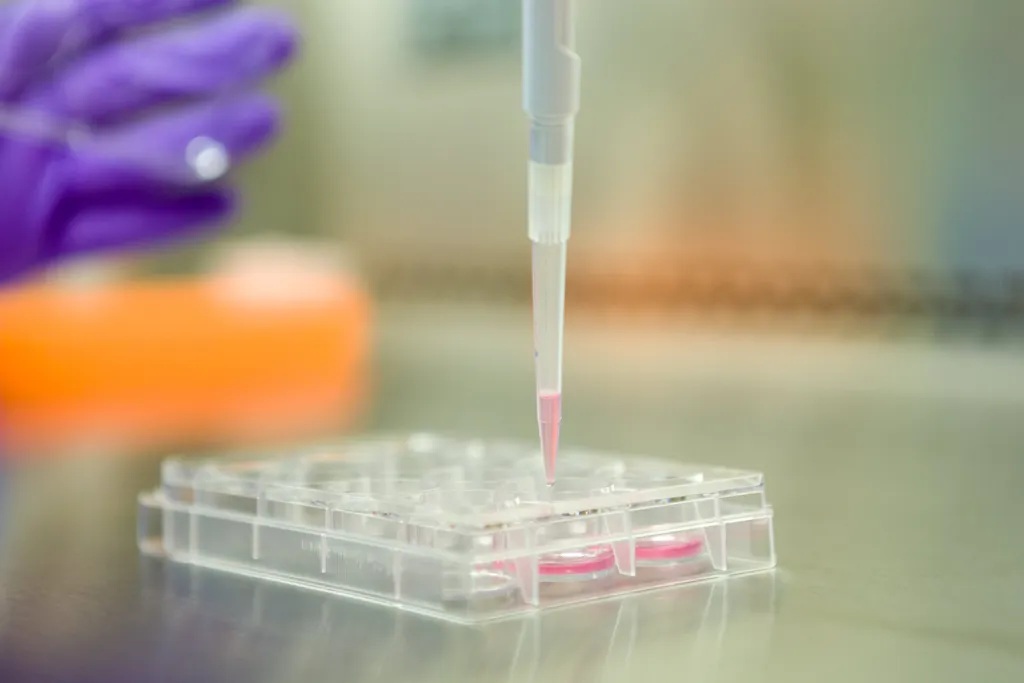
WWW.SMITHSONIANMAG.COM
Stem Cell Therapies Could Treat Parkinson's Disease by Rebuilding Lost Circuitry in the Brain, Studies Suggest
Stem Cell Therapies Could Treat Parkinson’s Disease by Rebuilding Lost Circuitry in the Brain, Studies Suggest
Two small clinical trials tested the safety of injecting stem cells into the brains of Parkinson’s patients and found no adverse effects
Lillian Ali
- Staff Contributor
April 21, 2025 1:23 p.m.
A cell culture plate with pluripotent stem cells, which can differentiate into any kind of cell in the body.
National Center for Advancing Translational Sciences
A treatment that could replenish cells in the brains of Parkinson’s disease patients caused no major negative reactions in two small, early-stage clinical trials. The research offers hope that stem cell transplants may be able to replace the loss of certain cells that leads to Parkinson’s symptoms.
Both studies injected stem cell-derived neurons into the brains of Parkinson’s patients and primarily tested the procedure’s safety. The pair of studies, published in the journal Nature last week, were both very small—one tested 12 patients, while the other tested seven—so researchers can’t yet conclude the effectiveness of stem cell treatments overall.
Still, the studies are “a big leap in the field,” Malin Parmar, a stem cell biologist at Lund University in Sweden who was not involved with the new research, tells Nature’s Smriti Mallapaty. “These cell products are safe and show signs of cell survival.”
Parkinson’s disease is a degenerative brain condition estimated to affect at least 1 percent of people over age 60 across the world. It causes deterioration in the basal ganglia, a brain area associated with motor control. The resulting changes in brain chemistry lead to the disease’s characteristic symptoms: slow movements, muscle tremors, stiffness and difficulty walking.
The cell loss caused by Parkinson’s results in a lack of dopamine—a key neurotransmitter—in the brain, so many Parkinson’s treatments seek to boost dopamine levels. These include medicines that increase available dopamine, resemble dopamine or block its natural breakdown. While these treatments can slow the progression of Parkinson’s disease, researchers do not have a cure for the condition.
Experimental stem cell treatments offer another potential way to manage Parkinson’s—these techniques seek not only to replace or mimic dopamine, but to repair the brain circuitry lost due to Parkinson’s disease. “The idea is to place these neuron progenitors [derived from stem cells] right where you need them to connect with other neurons in the brain,” Viviane Tabar, a neurosurgeon at the Memorial Sloan Kettering Cancer Center and lead author of the 12-participant study, tells NPR’s Jon Hamilton.
Stem cells are your body’s “master cells.” They are found in almost every tissue and, depending on the type of stem cell, can become any other kind of cell. The generation of stem cells to replace disease-affected cells is called regenerative medicine. For example, some patients with leukemia receive bone marrow transplants, which replace the diseased blood stem cells in the bone marrow with healthy ones.
The new trials used stem cell therapy to replace lost dopamine-producing neurons. In each study, researchers observed whether the new cells survived and whether dopamine production increased. One study, which treated 12 patients in the U.S. and Canada, used stem cells from donated human embryos, while the other study injected seven patients with donated adult stem cells in Kyoto, Japan.
In the larger of the two studies, the team gave a “low dose” of 0.9 million cells to five people and a “high dose” of 2.7 million cells to seven people. They expected a high rate of cell death, predicting that 100,000 and 300,000 cells would survive the surgery in each group, respectively, according to Nature.
They measured the outcomes of treatment on a standard scale of Parkinson’s progression. A typical Parkinson’s patient “would expect every year to get two or three points worse,” Lorenz Studer, a co-author of the larger study and a stem cell biologist at the Memorial Sloan Kettering Cancer Center, tells NPR. “The high-dose group, they got about 20 points better.” The low-dose group improved by about nine points.
The smaller study also noted some symptom improvement and a lack of adverse reactions, such as tumor development or uncontrolled bleeding. Jun Takahashi, senior author of the second study and a researcher at Kyoto University, tells Science News’ Laura Sanders
Stem cell therapies for Parkinson’s disease are not a new idea. But while some patients in past trials have shown improvement in symptoms, researchers had also found evidence suggesting Parkinson’s spread to the implanted, healthy cells. “There have been times of hype versus hope, and ‘is this for real, or is this not for real?’” Tabar tells Science News.
Tabar adds that the new studies point toward hope. The findings underscore the stem cell treatment’s safety, and hints of improvements in some patients are pushing these trials forward. Both studies are moving toward larger trials, which may offer stronger evidence of the treatment’s efficacy and open it up to more patients.
Mya Schiess, a neurosurgeon at the University of Texas Health Science Center at Houston who was not involved in the trials, tells NPR that “now we have the potential to really, really halt this disease in its tracks.”
Get the latest stories in your inbox every weekday.
0 التعليقات
0 المشاركات
19 مشاهدة


